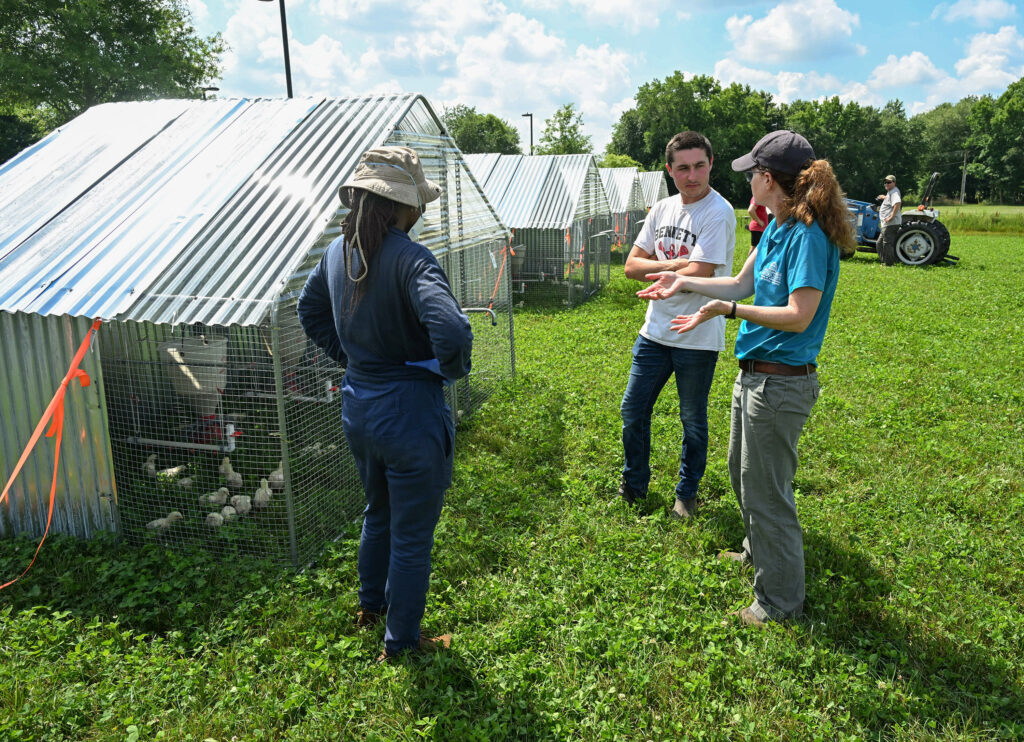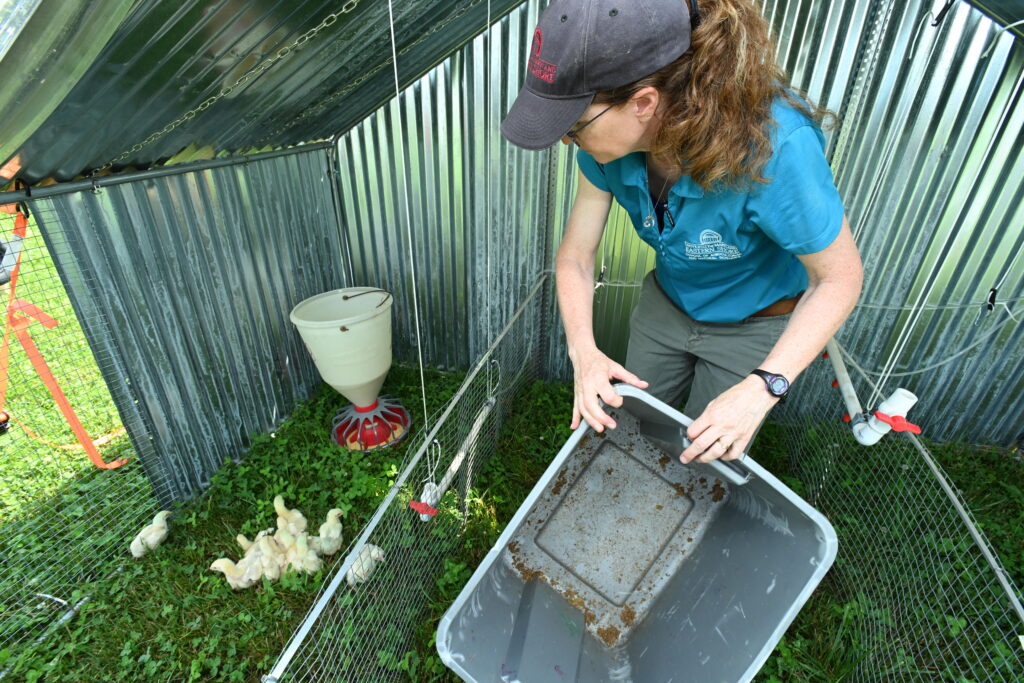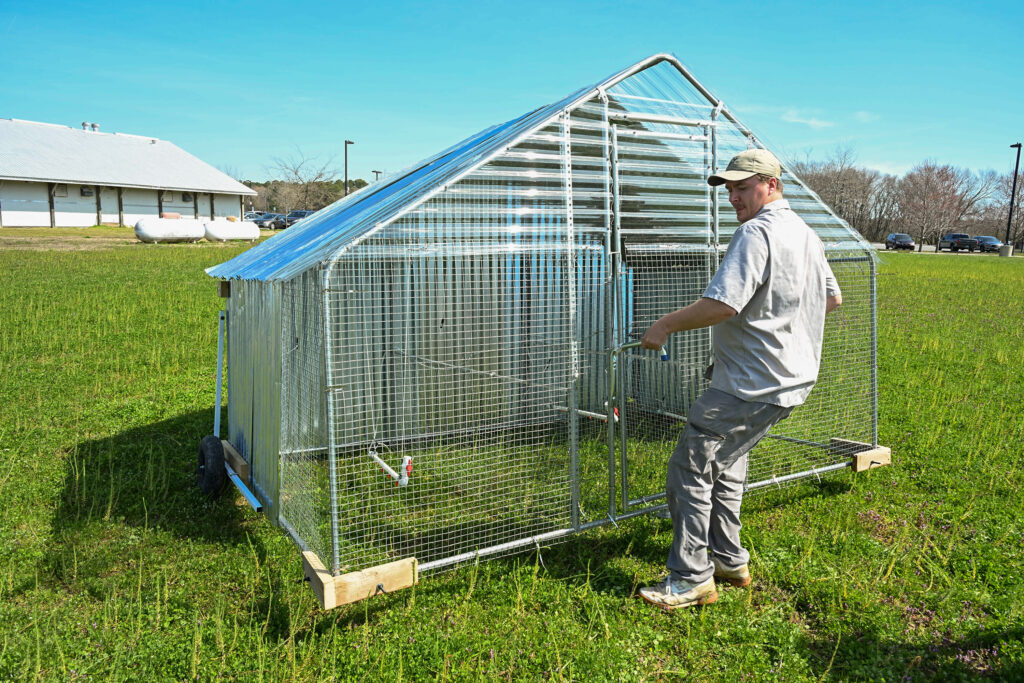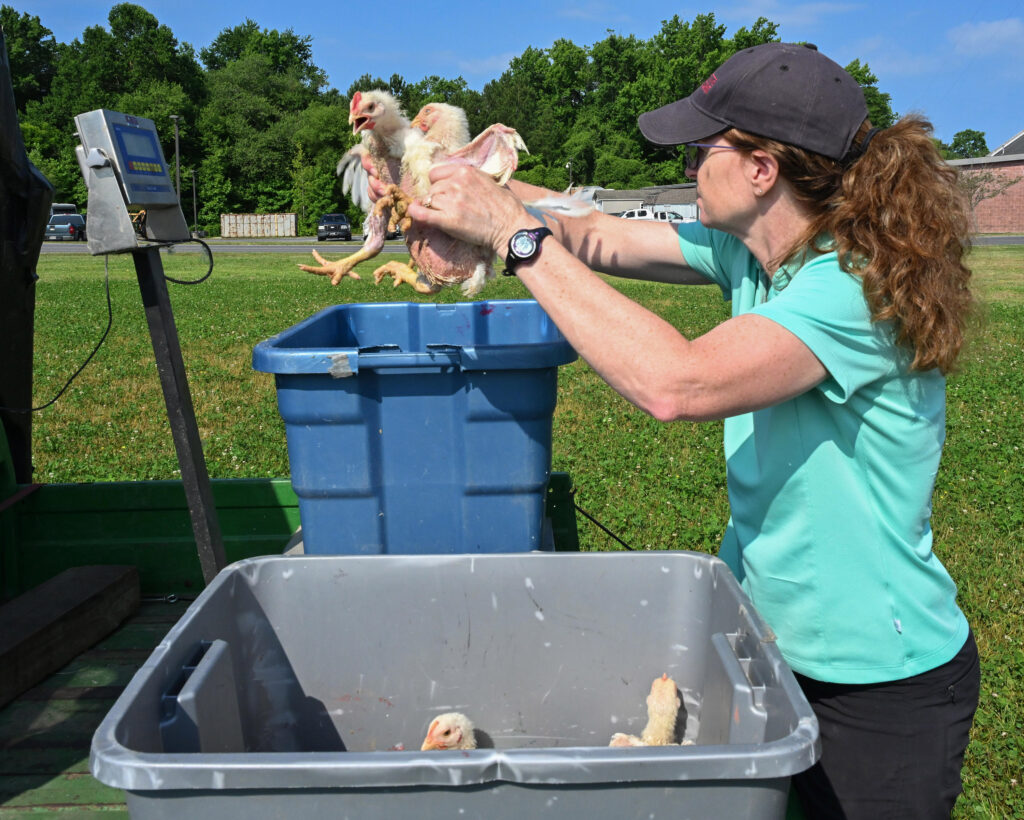
As the nation’s demographics change, so do the tastes and preferences of consumers when it comes to their food. Demand for meat produced through alternative methods, such as free range, organic and pastured, is on the rise. Today, however, when it comes to chickens, conventionally raised broilers dominate the U.S. poultry industry with 60 billion pounds produced annually.
In Maryland, according to the U.S. Department of Agriculture National Agricultural Statistics Service, the broiler chicken industry was valued at $1.75 billion in 2023. Closer to home on the Delmarva Peninsula, the meat chicken industry adds $4.4 billion to local economies in Delaware and the Eastern Shore of Maryland and Virginia.
“Raising chickens in commercial houses is an efficient and safe method of broiler production,” said UMES poultry researcher Dr. Jennifer Timmons, (pictured at left, far right). “Over 1,000 chicken growers contribute to the 100-year-old tradition on Delmarva.”
Growers are committed to raising healthy and productive birds as efficiently as possible, while protecting the environment, she said. Modern technology allows them to monitor their flocks several times a day to ensure the welfare of their chickens. In response, consumers are supplied with fresh and frozen meat through U.S. poultry companies that is safe and delicious.
Despite the economical supply of quality poultry products, interest remains in exploring other methods like pastured poultry. This alternative system involves placing broiler chickens in moveable pens on pasture where they can feed on a diverse diet of grass, grass seeds and small insects, along with being fed a supplemental grain diet.
In the 2023 round of competitive USDA-NIFA capacity building grants, the University of Maryland Eastern Shore was awarded $550,000 to evaluate heat mitigation strategies of broiler chickens raised on pasture. The project, Timmons said, is a first for UMES and is in collaboration with the University of Arkansas and Alcorn State University; typical of modern research.
“Pasture raised chickens may be susceptible to predators, including foxes and birds of prey, along with environmental conditions including heat or wet, rainy weather,” Timmons said.
The idea of pastured poultry, she explains, is to allow consumption of grasses and insects. Chickens, however, do not have the digestive ability to break down the fiber components of plants like ruminant animals (cattle and sheep) or hind-gut fermenters (horses and rabbits). With pasture raised chickens, most of the grasses are removed due to walking, scratching or pecking. The chickens were also provided their treatment diets, which were made from corn and soybean meal.
For the first round of the UMES study, a pasture was planted in fall 2023 with a mix of clover, alfalfa, field pea and ryegrass. Portable chicken pens were constructed over that winter for a trial that commenced in May 2024. The research team’s goal was to evaluate the impact of feeding pasture-raised birds a higher level of an essential amino acid, tryptophan, to see if it helped “mitigate the impact of heat stress” on broiler health and performance. The broilers were exposed to an acute heat stress environment at 20 and 41 days of age.
Chicks were raised inside for the first two weeks, then transferred to pasture pens and fed the study’s treatment diets until they reached 42 days old. The birds and feeders were weighed each week to measure weight gain and feed efficiency, Timmons said. In addition to performance data, cameras were installed in the pens to monitor bird welfare and behavior. At the end of the trial, carcass yield was measured and samples were collected to evaluate the food safety aspect of the poultry meat. A second trial started in early September using a slow growing breed of chicken, which will evaluate the same dietary treatments.
“There were many lessons learned with these first trials,” Timmons said. “The summer trial was very hot, and we learned a lot about pen placement and how often the pens should be moved. Overall, the performance of the broilers raised during the summer was similar between the two dietary treatments. However, additional data is still being analyzed.”
Two more trials are scheduled to start late in spring 2025 that will expose birds to high temperatures at a young age. This will potentially shift their thermal neutral zone, which would allow them to tolerate higher temperatures later in development, the poultry researcher said.
Gail Stephens, agricultural communications and media associate, University of Maryland Eastern Shore, School of Agricultural and Natural Sciences, UMES Extension, gcstephens@umes.edu., 410-621-3850.
Photos by Todd Dudek, agricultural communications, University of Maryland Eastern Shore, School of Agricultural and Natural Sciences, UMES Extension, tdudek@umes.edu.






